Coconut Oil For Stretch Marks – Benefits And Uses
Prevent the appearance of stretch marks on your body by using this effective oil.

Image: ShutterStock
Stretch marks can become a vital clog in your long-pending dream to have spotless skin all around your body. Among the many home remedies, coconut oil is quite common for stretch marks. This oil is known for its moisturizing and antimicrobial properties, thanks to the presence of highly beneficial free fatty acids (1). But does coconut oil really help erase stretch marks? Keep reading to know the answer

In This Article
Causes Of Stretch Marks
Stretch marks appear as pink, purple, or light gray streaks or stripes. They can develop due to the following factors (2):
- Pregnancy: Rapid weight gain and hormonal changes can stretch the skin and lead to stretch marks on the abdomen, thighs, and breasts.
- Weight Fluctuations: Sudden weight gain or loss can stretch or shrink the skin.
- Puberty: Growth spurts during adolescence may cause stretch marks.
- Corticosteroids: Their topical application may reduce the skin’s elasticity and collagen levels and increase the risk of developing stretch marks.
- Genetics: They can influence the skin’s elasticity and susceptibility to stretching.
- Medical Conditions: Cushing’s or Marfan syndromes weaken the skin’s connective tissues and make stretch marks more likely.
Stretch marks can impact a person’s self-esteem. However, natural ingredients like coconut oil may help fade them. Learn more in the next section.
Key Takeaways
- It is essential to use emollientsi A substance in skincare products that soothes dryness and irritation and creates a thin film on the skin to help retain moisture. and moisturizers to minimize stretch marks. Coconut oil has moisturizing and antimicrobial properties that can help erase stretch marks.
- You can apply coconut oil with aloe vera, turmeric, lemon juice, or vitamin E oil for stretch marks.
- Hivesi A common skin rash triggered by allergens in food or other irritants that causes itchiness and leads to raised, splotchy areas. , itchiness, rashes, burning sensation, skin irritation, and redness are common signs of a coconut allergic reaction.
Does Coconut Oil Work For Stretch Marks?
It may help. There is no scientific evidence to prove that coconut oil can help reduce stretch marks. However, coconut oil can help improve the appearance of the stretch marks.
A study states that the application of emollientsi A substance in skincare products that soothes dryness and irritation and creates a thin film on the skin to help retain moisture. and moisturizers is critical in improving stretch marks (3). Well-moisturized and hydrated skin are more elastic than dehydrated skin. Keeping the skin moisturized may help minimize the occurrence of stretch marks and also prevent them.
Coconut oil may help reduce stretch marks due to the following benefits:
- It has moisturizing properties: Coconut oil is an excellent moisturizer. the skin barrier function by reducing transepidermal water loss (TEWL) or loss of water from the epidermis, thus keeping the skin hydrated (4).
- It boosts collagen development: It stimulates fibroblastsi The principal cell of connective tissue that produces extracellular matrix and collagen and supports other body tissues and cells. and promotes collagen production (which is vital for wound healing and scar formation) (5).
- It protects the skin from UV damage: It protects the skin from the harmful effects of UV exposure (which is crucial for scar recovery) (5).
- It is anti-inflammatory: It has anti-inflammatory effects and can protect your skin from inflammatory conditions, such as atopic dermatitisi A general skin condition common in kids that most commonly causes dryness and inflammation. Also known as eczema. and eczema (6).
These properties of coconut oil (especially virgin coconut oil) can keep your skin healthy and may also help in minimizing the appearance of stretch marks. If you want to use coconut oil for pregnancy stretch marks or any other stretch marks, here are the ways to use it.
Jadine Hub, a blogger, recalls her personal experience of how coconut oil works wonders for all her skincare woes. She states, “I am not a fan of skin bleaching and I have sort [sought] for a good product that can maintain my natural skin glow and also give me that lovely skin color I desire with no stretch marks, black knuckles, and all those ugly stuff. Fortunately, I stumbled upon my secret ingredient: ‘Coconut Oil (i).’” Additionally, she sheds light on the benefits of coconut oil for various parts of the body and skin including, its skin brightening, antifungal, moisturizing, and acne-removal properties.
How To Use Coconut For Stretch Marks
- Coconut Oil
- Coconut Oil And Aloe Vera
- Coconut Oil And Castor Oil
- Coconut Oil And Turmeric
- Coconut Oil, Salt, And Sugar
- Coconut Oil And Olive Oil
- Coconut Oil And Tea Tree Oil
- Coconut Oil And Shea Butter
- Coconut Oil And Lemon Juice
- Coconut Oil And Baking Soda
- Coconut Oil and Coffee Scrub
- Coconut Oil And Vaseline
- Coconut Oil And Egg White
- Coconut Oil And Vitamin E Oil
- Coconut Oil And Camphor
Note: Use only virgin coconut oil. If you are pregnant and want to try out any of the recipes listed below, you must consult a doctor.
1. Coconut Oil
Coconut oil helps to keep the skin moisturized and may reduce the appearance of stretch marks.
You Will Need
1 tablespoon of virgin coconut oil
Method
- Warm the coconut oil for a few seconds (if it is solid).
- Massage the warm oil onto the affected area gently for 5-10 minutes.
- Leave it on overnight and wash off the next day.
- Repeat this every day.
2. Coconut Oil And Aloe Vera
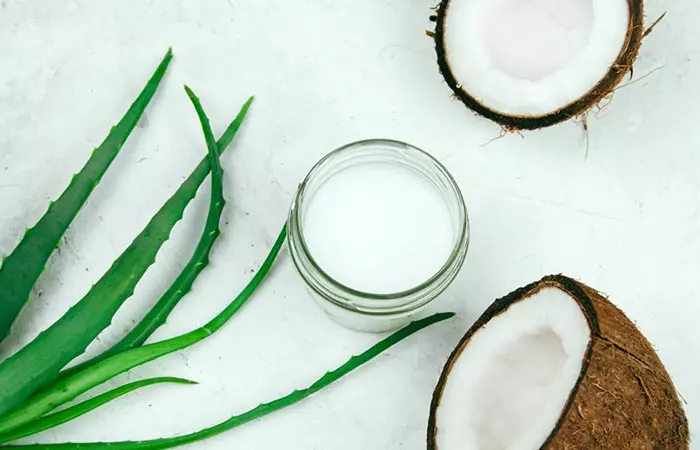
Aloe vera has a moisturizing effect on the skin (7). Using aloe vera for stretch marks can keep the skin moisturized, which is essential for fading the scars. Adding coconut oil to it doubles its moisturizing and healing factor. This remedy can keep the skin healthy.
You Will Need
- 1 tablespoon of virgin coconut oil
- 1 tablespoon of fresh aloe vera gel
Method
- Warm the coconut oil for a few seconds in the microwave.
- Mix the aloe vera gel and oil well.
- Massage it gently onto the affected area for 5-10 minutes.
- Leave it on overnight.
- Repeat this every day.
3. Coconut Oil And Castor Oil
Castor oil contains ricinoleic acid, which has skin-conditioning effects (8). This combination can help keep the skin moisturized and soft.
You Will Need
- 1 teaspoon of castor oil
- 1 tablespoon of virgin coconut oil
Method
- Mix the two oils. Warm the coconut oil if needed.
- Massage the mixture onto the affected area for 5-10 minutes.
- Leave it on overnight.
- Repeat every day.
4. Coconut Oil And Turmeric
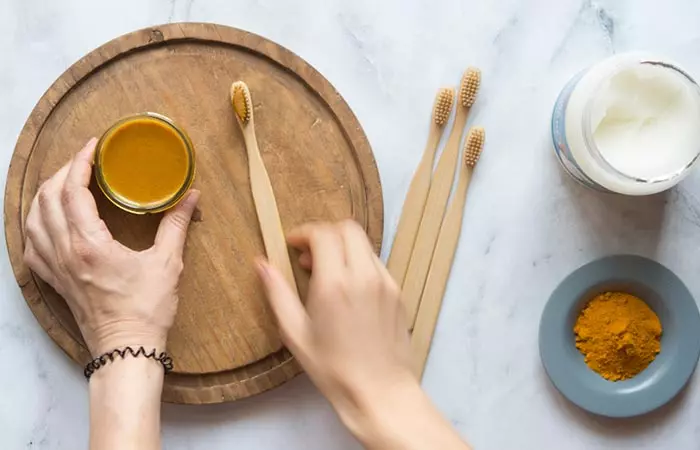
Turmeric helps to boost collagen development and can help treat psoriasisi An autoimmune skin condition in which the build-up of cells causes inflammation and raised and scaly patches. and other skin conditions (9). While its effect on stretch marks is not well-researched, it can contribute to skin health.
You Will Need
- ½ teaspoon of turmeric powder
- 1 tablespoon of virgin coconut oil
Method
- Mix the turmeric powder and coconut oil.
- Massage the mixture gently onto the stretch marks.
- Let it stay for at least an hour (be careful not to stain your clothes).
- Wash it off and apply a moisturizer.
- Repeat this every day.
 Quick Tip
Quick Tip5. Coconut Oil, Salt, And Sugar
Salt and sugar work well as scrubbers due to their coarse texture. Scrubbing helps to get rid of dead skin cells. While there are no scientific studies to establish the benefits of salt and sugar for stretch marks, anecdotal evidence suggests that they can help reduce the appearance of these marks.
You Will Need
- 1 teaspoon of salt
- 1 tablespoon of sugar
- 1 tablespoon of virgin coconut oil
Method
- Mix the salt, sugar, and coconut oil.
- Massage the mixture gently onto the affected area for 2-3 minutes.
- Leave it on for half an hour.
- Wash off and follow up with a moisturizer.
- Repeat this every alternate day.
6. Coconut Oil And Olive Oil
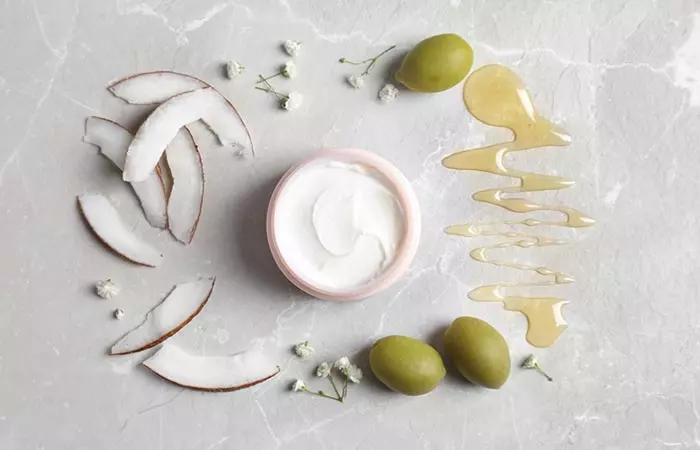
Although olive oil was found to negatively affect the TEWL rate of the skin and make it dry, it was found to promote wound healing in mice studies (10). However, using olive oil for stretch marks along with other ingredients, such as coconut oil, may keep the skin moisturized and improve the appearance of the scars.
You Will Need
- ½ teaspoon of virgin olive oil
- 1 tablespoon of virgin coconut oil
Method
- Mix the two oils.
- Massage the blend onto the affected area.
- Leave it on overnight and wash off the next day.
- Do this every day.
7. Coconut Oil And Tea Tree Oil
Tea tree oil helps in wound healing and reduces skin infection
(11). However, its effect on stretch marks is not documented. It is believed that it is anti-inflammatory and wound healing properties can reduce the appearance of stretch marks.
You Will Need
- 2-3 drops of tea tree essential oil
- 1 tablespoon of virgin coconut oil
Method
- Mix the two oils.
- Massage the blend well onto the stretch marks.
- Leave it on for an hour and wash off.
- Follow up with a moisturizer.
8. Coconut Oil And Shea Butter

Shea butter contains tocopheroli A chemical compound that comprises vitamin E and exhibits antioxidant properties found in leafy vegetables and egg yolk. , phenolsi Colorless or white aromatic chemical compounds with antiseptic and antioxidant properties that have long-term health benefits. , and sterolsi Plant compounds found in the cell membrane of microorganisms that lower cholesterol levels and reduce the risk of heart disease. and has anti-inflammatory properties. Shea butter products were found to have similar efficacy as products containing ceramidesi Naturally occurring fats found in the outer layers of skin cells that make up about 50% of fats in skin cells. (12).
You Will Need
- 1 tablespoon of shea butter
- 1 tablespoon of virgin coconut oil
Method
- Massage the mixture onto the affected area.
- Leave it on overnight.
- Repeat every day.
 Quick Tip
Quick Tip9. Coconut Oil And Lemon Juice
There is no scientific research that establishes the efficacy of lemon juice for stretch marks
. However, this widely used ingredient has a bleaching effect on the skin, which may help reduce the appearance of stretch marks and enhance your skin’s beauty.
You Will Need
- ½ teaspoon of lemon juice
- 1 tablespoon of virgin coconut oil
Method
- Massage the mixture onto the stretch marks.
- Leave it for at least half an hour.
- Wash off and apply moisturizer.
- Do it once every day.
10. Coconut Oil And Baking Soda
It is not recommended to apply baking soda on the skin due to its abrasive effect. However, it is a popular home remedy and is used for exfoliation. Anecdotal evidence suggests that the harsh nature of baking soda may help improve the skin texture of the stretch marks. Avoid this recipe if you have sensitive skin.
You Will Need
- ½ teaspoon of baking soda
- 1 tablespoon of virgin coconut oil
Method
- Mix the baking soda and coconut oil well.
- Massage the mixture on the scars for a few minutes.
- Leave it on for 5-10 minutes and wash off.
- Apply moisturizer.
- Repeat this twice every week.
11. Coconut Oil and Coffee Scrub
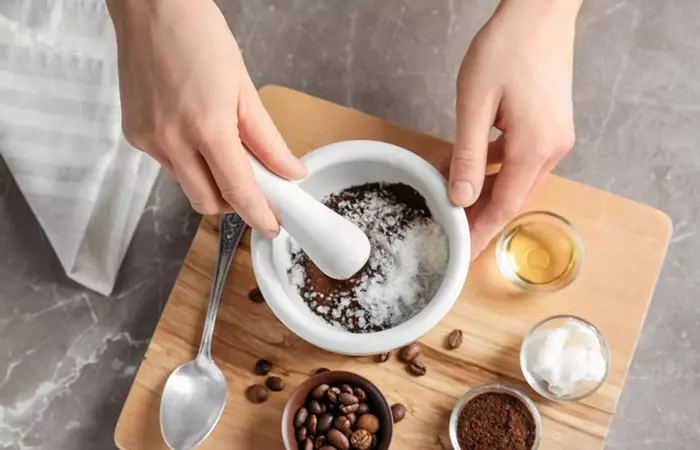
Coffee grounds have a coarse texture and are excellent for scrubbing the skin. The effect of scrubbing on stretch marks is not known yet. However, you may try this recipe for exfoliation.
You Will Need
- 1 teaspoon of coffee grounds
- 1-2 tablespoons of virgin coconut oil
Method
- Mix the coffee grounds with the oil.
- Massage the mixture onto the affected area gently for 5 minutes.
- Leave it for another 10 minutes.
- Wash off and apply moisturizer.
- Repeat this twice a week.
12. Coconut Oil And Vaseline
Vaseline is occlusive. When applied, it prevents moisture from escaping your skin, thus helping in maintaining hydration (13). However, due to its occlusive nature, it also does not allow any other ingredient to penetrate your skin. Using Vaseline and coconut oil together may not keep the skin moisturized, but layering coconut oil with Vaseline might help.
You Will Need
- 1 tablespoon of virgin coconut oil
- 1 teaspoon of Vaseline
Method
- Massage the affected area with coconut oil.
- Wait for 5-10 minutes and then apply Vaseline to the area.
- Leave it on overnight.
- Repeat this every day.
13. Coconut Oil And Egg White
Egg white is a popular home remedy and is used in face masks as it makes the skin tighter. There is no scientific proof that it works on stretch marks, but you may try this popular remedy if you want to.
You Will Need
- White of one egg
- 1 tablespoon of virgin coconut oil
Method
- Mix the egg white and coconut oil.
- Apply the mixture on the stretch marks.
- Let it stay for 10-15 minutes.
- Wash off and apply moisturizer.
- Repeat it once daily.
14. Coconut Oil And Vitamin E Oil
Vitamin E helps to stabilize the skin barrier and is a potent antioxidant (14). Together with coconut oil, vitamin E can keep the skin healthy and may also improve stretch marks.
You Will Need
- 1-2 vitamin E softgels
- 1 tablespoon of virgin coconut oil
Method
- Squeeze the liquid from the softgels.
- Mix the coconut and vitamin E oils.
- Massage the blend onto the affected area.
- Leave it on overnight.
15. Coconut Oil And Camphor
Applying camphor to the skin induces an increase in blood flow (15). However, its effect on stretch marks is not known. Camphor may help improve blood flow to the affected area and improve the overall appearance of the skin.
You Will Need
- 2 drops of camphor oil
- 1 tablespoon of virgin coconut oil
Method
- Mix both the oils.
- Massage the blend gently onto the affected area.
- Leave it on for 2-5 minutes.
- Wash it off and apply moisturizer.
These are the ways you can use coconut oil to reduce stretch marks. And if you are wondering about alternatives, explore more ways on how to get rid of stretch marks.
Moving on, although coconut oil is considered safe to use for the skin, you need to be aware of the associated risks.
Side Effects And Risks Of Using Coconut Oil On The Skin
Virgin coconut oil is considered a non-skin irritant, and it is also non-phototoxic, which means it will not make your skin vulnerable to sun damage (6).
Pregnant women can also use it topically on their abdomen to prevent severe stretch marks (after consulting their doctor).
However, if you are allergic to coconut, your skin might react to it. The common signs of an allergic reaction include:
- Hivesi A common skin rash triggered by allergens in food or other irritants that causes itchiness and leads to raised, splotchy areas.
- Rashes
- Itchiness
- Redness
- Burning sensation
- Skin irritation
Hence, it is better to check if you are allergic to coconut oil before proceeding with any of the above methods. Also, it is recommended to use virgin coconut oil and not the refined variants available on the market. Refined oils might contain additives that are harmful to the skin.
Discover the truth about coconut oil and its effectiveness in reducing stretch marks. This insightful video explores the science, personal experiences, and practical tips to help you make an informed decision. Say goodbye to stretch marks!
Infographic: 5 Coconut Oil Blends To Reduce Stretch Marks
Coconut oil might just be what you need when it comes to DIY skin care routines. Apart from its nourishing benefits, it also helps to reduce stubborn stretch marks. In the infographic below, we have compiled the top 5 amazing coconut oil concoctions that you can use to reduce the appearance of your stretch marks. Check it out!
Some thing wrong with infographic shortcode. please verify shortcode syntaxThere is not enough empirical evidence to prove the efficacy of coconut oil for stretch marks. However, people who have used the oil claim it to be quite effective. You may try the DIY natural remedies discussed in the article. If you use them on red stretch marks or during the initial phases of developing them, you may still see some effects. However, ensure to consult a doctor before trying out the remedies.
Stretch marks are normal, and you need not worry about them. Keep the skin moisturized and follow a skin care routine. If you are concerned about their appearance, consult a doctor to learn about procedures to fade them.
Frequently Asked Questions
When should I start applying oil for stretch marks?
You can start using coconut oil anytime to help hydrate and nourish your stretch marks. Ensure you conduct a patch test to check for allergic reactions before application.
Is coconut oil better than lotion?
Both coconut oil and lotion are beneficial for your skin. A body lotion and coconut oil hydrate your skin and prevent dryness, which may be effective in improving the appearance of stretch marks. You can use either or both as per your preference.
Do you apply coconut oil before or after a shower?
You can apply coconut oil before or after your shower to help seal the moisture and keep your skin hydrated.
Some thing wrong with illustration image shortcode. please verify shortcode syntaxPersonal Experience: Source
StyleCraze's articles are interwoven with authentic personal narratives that provide depth and resonance to our content. Below are the sources of the personal accounts referenced in this article.
i. COCONUT OIL: SECRET INGREDIENT FOR A FLAWLESS SKINhttps://jadinehub.wordpress.com/2018/03/24/coconut-oil-secret-ingredient-for-a-flawless-skin/
References
Articles on StyleCraze are backed by verified information from peer-reviewed and academic research papers, reputed organizations, research institutions, and medical associations to ensure accuracy and relevance. Read our editorial policy to learn more.
- Coconut oil consumption and cardiovascular risk factors in humans, Nutrition Reviews, US National Library of Medicine, National Institutes of Health.
https://www.ncbi.nlm.nih.gov/pmc/articles/PMC4892314/ - Stretch Marks StatPearls US National Library of Medicine National Institutes of Health.
https://www.ncbi.nlm.nih.gov/books/NBK436005/ - Management of stretch marks (with a focus on striae rubrae). Journal of cutaneous and aesthetic surgery, US National Library of Medicine, National Institutes of Health.
https://www.ncbi.nlm.nih.gov/pmc/articles/PMC5782435/ - The Effect of Topical Virgin Coconut Oil on SCORAD Index, Transepidermal Water Loss, and Skin Capacitance in Mild to Moderate Pediatric Atopic Dermatitis: A Randomized, Double-Blind, Clinical Trial, International Journal of Dermatology, US National Library of Medicine, National Institutes of Health.
https://pubmed.ncbi.nlm.nih.gov/24320105/ - Enhanced Barrier Functions and Anti-Inflammatory Effect of Cultured Coconut Extract on Human Skin, Food and Chemical Toxicology, US National Library of Medicine, National Institutes of Health.
https://pubmed.ncbi.nlm.nih.gov/28564614 - In vitro anti-inflammatory and skin protective properties of Virgin coconut oil. Journal of Traditional and Complementary Medicine, US National Library of Medicine, National Institutes of Health.
https://www.ncbi.nlm.nih.gov/pmc/articles/PMC6335493/ - Aloe vera: a short review. Indian Journal of Dermatology, US National Library of Medicine, National Institutes of Health.
https://www.ncbi.nlm.nih.gov/pmc/articles/PMC2763764/ - Final report on the safety assessment of Ricinus Communis (Castor) Seed Oil, Hydrogenated Castor Oil, Glyceryl Ricinoleate, Glyceryl Ricinoleate SE, Ricinoleic Acid, Potassium Ricinoleate, Sodium Ricinoleate, Zinc Ricinoleate, Cetyl Ricinoleate, Ethyl Ricinoleate, Glycol Ricinoleate, Isopropyl Ricinoleate, Methyl Ricinoleate, and Octyldodecyl Ricinoleate.” International Journal of Toxicology, US National Library of Medicine, National Institutes of Health.
https://pubmed.ncbi.nlm.nih.gov/18080873// - Beneficial role of curcumin in skin diseases. Advances in Experimental Medicine and Biology, US National Library of Medicine, National Institutes of Health.
https://pubmed.ncbi.nlm.nih.gov/17569219 - Olive Oil-Induced Reduction of Oxidative Damage and Inflammation Promotes Wound Healing of Pressure Ulcers in Mice, Journal of Dermatological Science, US National Library of Medicine, National Institutes of Health.
https://pubmed.ncbi.nlm.nih.gov/27091748/ - A review of applications of tea tree oil in dermatology. International Journal of Dermatology, US National Library of Medicine, National Institutes of Health.
https://pubmed.ncbi.nlm.nih.gov/22998411// - Patient Acceptability, Efficacy, and Skin Biophysiology of a Cream and Cleanser Containing Lipid Complex With Shea Butter Extract Versus a Ceramide Product for Eczema, Hong Kong Medical Journal, US National Library of Medicine, National Institutes of Health.
https://pubmed.ncbi.nlm.nih.gov/26314567/ - Effects of Petrolatum on Stratum Corneum Structure and Function, Journal of the American Academy of Dermatology, US National Library of Medicine, National Institutes of Health.
https://pubmed.ncbi.nlm.nih.gov/1564142/ - Topical management of striae distensae (stretch marks): prevention and therapy of striae rubrae and albae.” Journal of the European Academy of Dermatology and Venereology, US National Library of Medicine, National Institutes of Health.
https://www.ncbi.nlm.nih.gov/pmc/articles/PMC5057295/ - Camphor induces cold and warm sensations with increases in skin and muscle blood flow in human. Biological & Pharmaceutical Bulletin, US National Library of Medicine, National Institutes of Health.
https://pubmed.ncbi.nlm.nih.gov/25451841//
Read full bio of Dr. CP Thajudheen
Read full bio of Ramona Sinha
Read full bio of Anjali Sayee
Read full bio of Shiboli Chakraborti







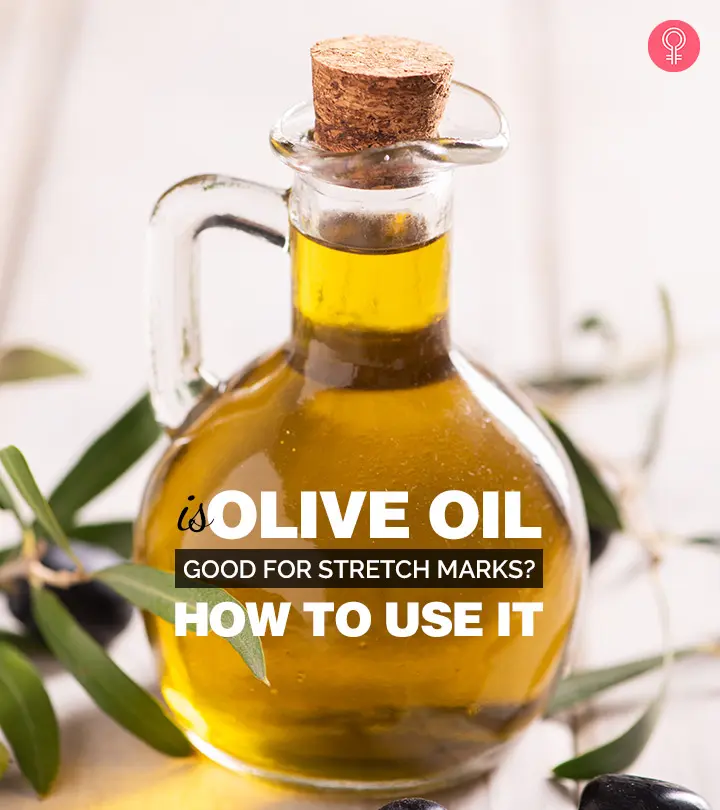


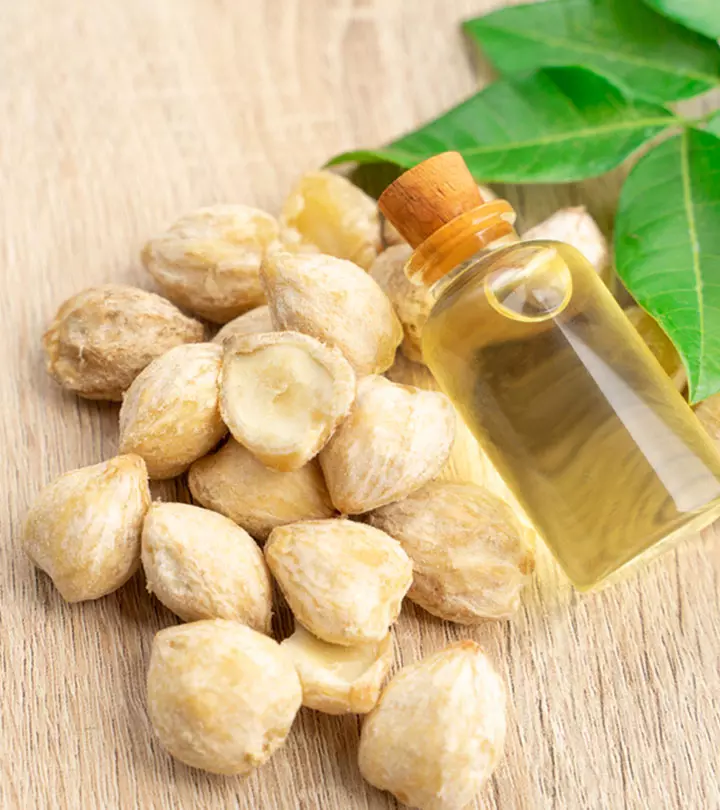

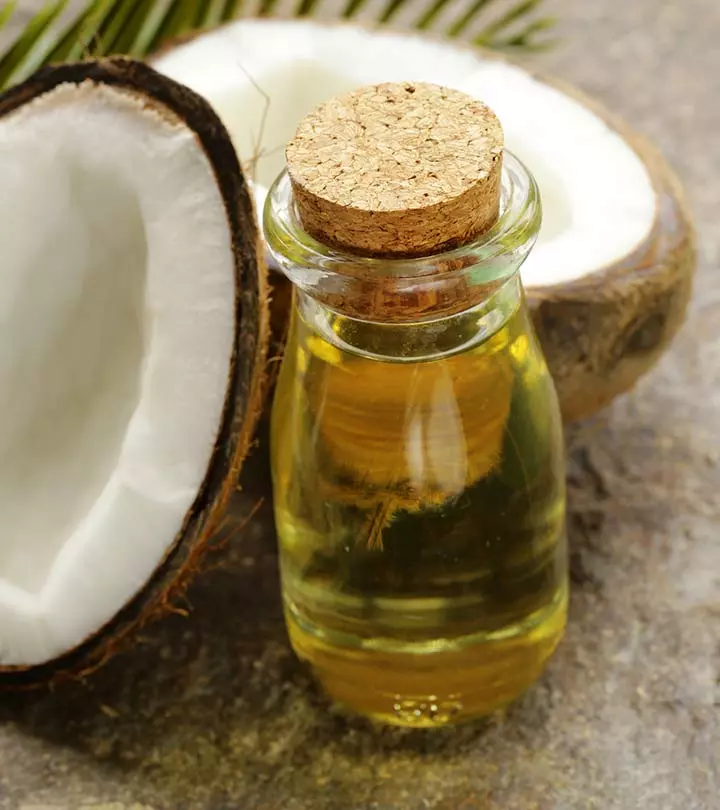
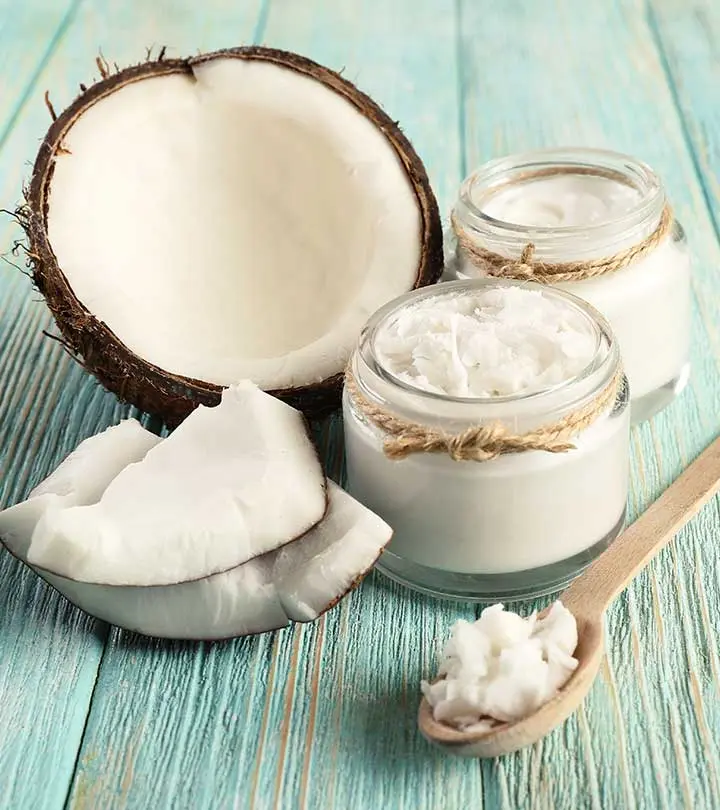


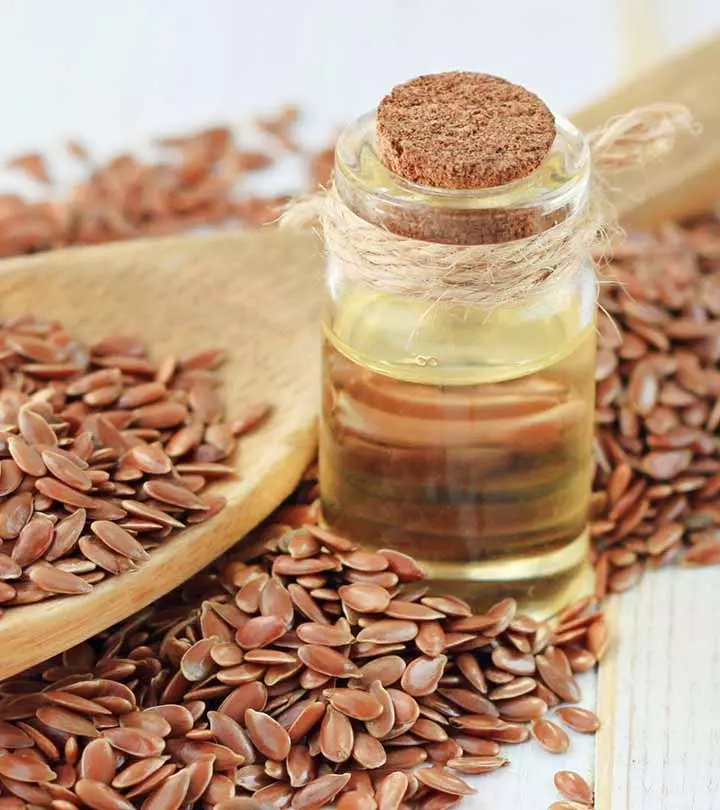







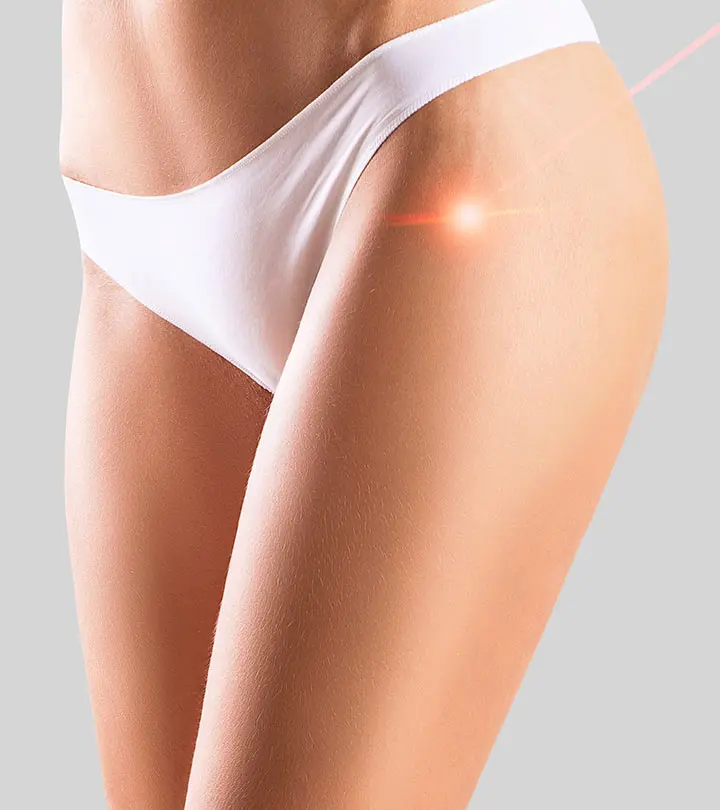
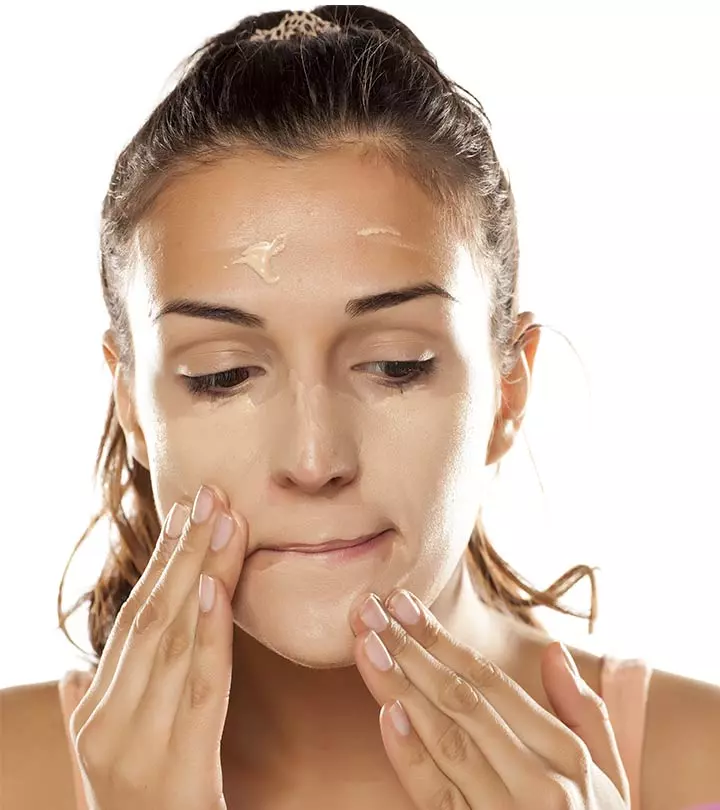

Community Experiences
Join the conversation and become a part of our empowering community! Share your stories, experiences, and insights to connect with other beauty, lifestyle, and health enthusiasts.